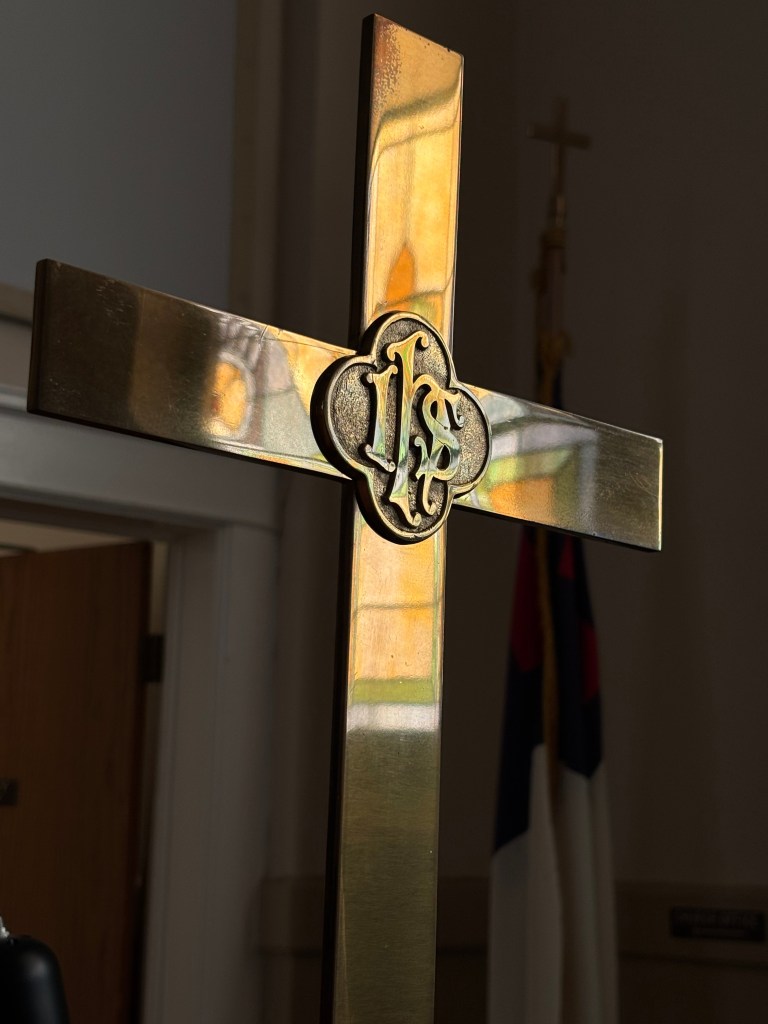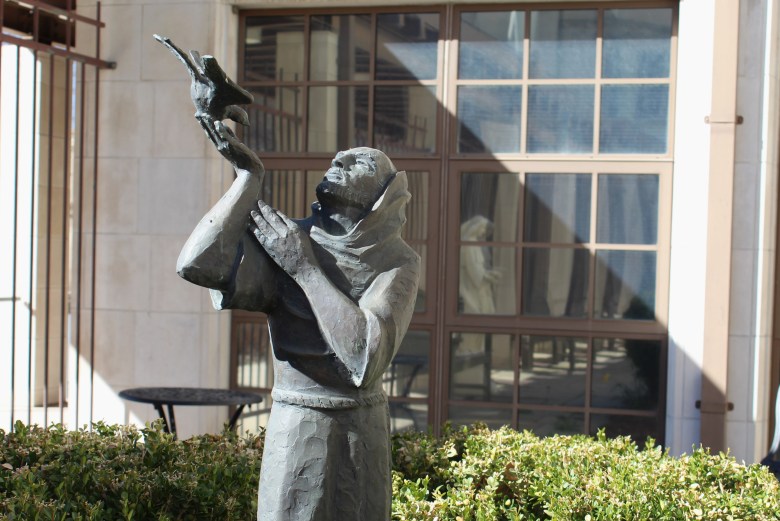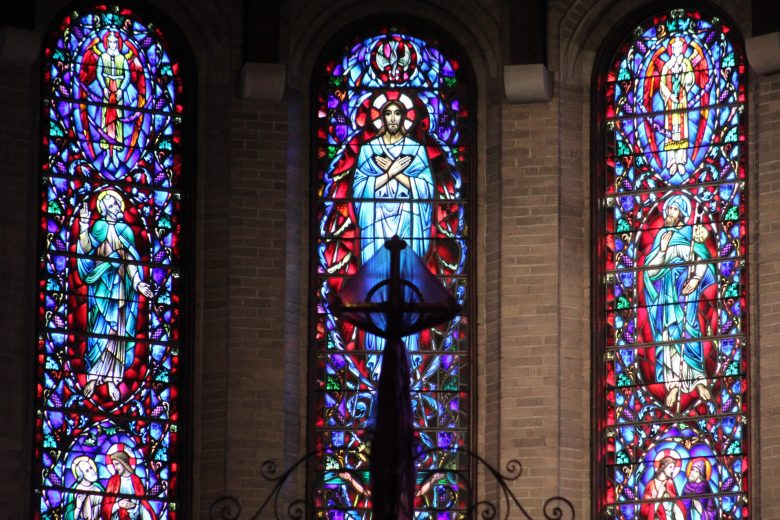In March 2020, Christian churches across the Denver area shut their doors during the initial COVID-19 shutdowns. Many hoped the doors would be reopened for Easter in April.
But they weren’t.
Instead, local Christians watched their churches’ Easter celebrations online while their pastors preached and their musicians played for empty churches.
The Very Rev. Richard Lawson of St. John’s Cathedral — the Episcopal cathedral in central Denver — recalled that Easter, saying, “There were less than five people in the entire cathedral, and two of them were priests.”
Meanwhile, some smaller congregations like the United Church of Idaho Springs held its Easter service via video conference, where everyone logged in to worship together.

Five years later, local church leaders expected this Easter would look more normal. But even then, they couched it as “the new normal,” outlining how much their churches have changed in terms of technology, membership, ministry and more in the last five years.
In March 2025, Colorado Community Media spoke with Christians leading six churches across five denominations and four counties in the Denver area. While experiences varied, they all said their congregations have changed permanently since March 2020.
“It has been a really hard journey,” said the Rev. Susan Otey of the First United Methodist Church of Golden. “Pastoring during COVID was some of the hardest work I have ever done. … I could see that God was working to make something good out of a terrible situation.”
Disciples in the digital age
Across the board, leaders from the six churches said technology was far and away the biggest change.
Before, none of them offered online options for Sunday services; now, all of them either livestream or allow people to join via video conference.
In general, they said it’s a great help, as church members can now join when they are homebound, sick or traveling. The United Church of Idaho Springs has a member who moved to Minnesota but still joins remotely, and some churches said they also livestream funerals so loved ones can watch from anywhere.

Figuring out how to livestream services in spring 2020 was rough going, as churches had to get creative with the limited resources they had.
For instance, the First United Methodist Church of Fort Lupton started by taping an iPad to a tripod. Now, the church has a dedicated camera in the sanctuary, and Church Council Chair Neena Hagans monitors the livestream from the choir loft.
Otey said the pandemic pushed her congregation to invest in the technology necessary to livestream services, which might not have happened until 2030 otherwise.
“COVID taught us that virtual services are essential in this day and age,” she continued. “(The pandemic) pushed us several years into the future.”
Along with Sunday services, technology is now a key aspect in other parts of church life, from online giving to hybrid Bible studies, church leaders said.
Daren Forbes, who’s on the Arvada Stake communications council for the Church of Jesus Christ of Latter-day Saints, said there is “an abundance of podcasts” that he and his fellow church members use to help them study scripture, church history and similar topics.

In fact, the Church of Jesus Christ of Latter-day Saints has its own app with all its holy texts, the given year’s curriculum, videos and other resources “to augment study in the home,” he described.
Forbes and other Christians throughout Denver clarified how these technologies don’t replace in-person services or fellowship opportunities. They are simply another option.
Lawson believes that, especially after the pandemic, “people are hungry for community,” whether that’s in-person or online.
“Livestreaming has expanded our reach beyond what we ever could’ve imagined,” Lawson said. “It’s too bad it took COVID to teach us that.”
Parishioners in the pews
In general, the number of Coloradans identifying as Christian has declined, mirroring a national trend, according to Colorado Public Radio; and the Associated Press has reported how Protestant denominations’ national membership has been declining for years.
Regarding their own flocks, leaders from the six churches had mixed experiences.

Otey and Lawson said their congregations in Golden and Denver, respectively, have actually grown over the last five years, especially if one includes online attendance. Their biggest demographic changes have been with young families and young adults, respectively.
Otey believed it was because people are seeking out a community that shares their values and beliefs, with the idea of raising their children in it, too. She summarized those parents’ experiences as: “I want to teach my kids about loving and serving our neighbors.”
Meanwhile, Forbes said the Arvada Stake’s overall membership hasn’t changed significantly, but there have been a few demographic shifts over the last five years.
As western Arvada has grown, so has church membership in that area. Members from western Arvada tend to be young families, while eastern Arvada is more older people who’ve lived in the area for decades, Forbes described.
Additionally, he said the Arvada Stake has seen significant growth among its Spanish-speaking population.
Contrastingly, membership at the United Church of Idaho Springs and the First United Methodist Church of Fort Lupton have declined slightly.

Vivian Simpson, chair of the church council, said the United Church of Idaho Springs was averaging about 30 people at Sunday services before the pandemic. Now, it’s about 20 people in-person with another five online.
Fort Lupton church leaders said their congregation averaged 80 to 100 people on Sundays before the pandemic. Now, it’s down to about 60 in the pews, with some joining online.
For the First Baptist Church of Denver, while its attendance and overall membership haven’t changed much, its space utilization has.
Kurt Kaufman, a member of the pastoral team, said the church used to have a high demand for facility rentals and parking-space leases before the pandemic. Now, demand for both has gone down significantly, impacting the church’s budget.
“We haven’t had a parking waitlist since 2019,” Kaufman said. “We’ve had to rethink what we do to make money and how to survive as a congregation.”
Pastors in the pulpit
Both the First Baptist Church of Denver and the United Church of Idaho Springs said their previous pastors left within the last five years, and they’ve struggled to find replacements.

Kaufman said he and fellow members of the First Baptist Church’s pastoral team are rotating responsibilities, including preaching on Sundays.
Similarly, Simpson said the Idaho Springs church has been looking for a part-time pastor since its former pastor retired in 2021.
Because it’s a combined Methodist and Presbyterian congregation, Simpson said the church has looked through Methodist, Presbyterian and unaffiliated channels. It’s had some interest, but nothing that worked out long-term, she described.
“Nationwide, there’s a shortage of ordained ministers for Methodist and Presbyterian (churches),” she said.
Simpson added that the Idaho Springs church can only afford a part-time pastor, which makes the search more difficult.
In a similar vein, the First United Methodist Church of Fort Lupton has had a dedicated pastor in the Rev. Anna Viehland since 2022, but she splits her time between Fort Lupton and another Methodist church in Erie.

On March 29, St. John’s Cathedral ordained four people as deacons. They’re now scheduled to be ordained as priests in October.
Lawson said four ordained ministers in a year is about average for the Episcopal Church’s Diocese of Colorado.
However, with the influx of young adults at the cathedral, Lawson said he’s seen increasing interest in ordination among his congregation. In 2025, St. John’s Cathedral will have five members attend seminary, including one of the newly ordained, he said.
Charity in the community
In terms of ministry — both for their members and for the wider community — there were some common threads among the six churches.
Along with a greater push for online or hybrid events, church leaders said they’ve seen more demand for small-group events, such as Bible studies, parent groups and in-home ministering.
On top of their continued interfaith partnerships, the two Denver churches said they’ve seen more demand for social justice-focused events and groups.

In addition to its Faith in Action ministry, Lawson said St. John’s Cathedral now has the Re-Imagining Justice group that focuses on racial healing, and the Migrant Interest Group that does pro-immigration work.
Kaufman said the First Baptist Church is now “more attuned to hunger and social justice issues around our community” than it was pre-pandemic. Part of that is because of its new outdoor community fridge, which has distributed about 30,000 pounds of food since February 2023.
Additionally, because its parking lot isn’t as full as it once was, Kaufman said the church has been able to host a shower trailer and a safe parking program.
The other four churches said they’ve likewise seen increased demand among their safe parking programs, free weekly meals and similar ministries; and they’ve worked to meet that demand alongside other churches and nonprofits.
“Some things that started during COVID really defined who we are as a church,” Otey said. “We increased our services tremendously.”
During the COVID-19 shutdowns, Otey described how her church worked with the larger Golden community to distribute free food to the homebound and unsheltered — even distributing food outside when indoor gatherings were restricted.

And that work has continued to the present day, she said, as the church has expanded from free meals once a week to three times a week.
Forbes encouraged people to visit justserve.org to find service opportunities near them. These events are open to anyone, not just Christians, he emphasized, saying it could be anything from painting a house to working at a local food bank.
“It’s become even more apparent how important those service opportunities are because of COVID and what we’re experiencing in society,” Forbes said. “We have more in common with our neighbors than we think … (and) when we have an opportunity to serve one another, those differences dissipate.”
‘Best of all, God is with us’
Another common thread among the six churches was how difficult the last five years have been, in one form or another.
Church leaders discussed loneliness among their members, concern about the declining number of Christians locally and nationally, and burnout among their volunteers and ordained ministers.

Viehland, Fort Lupton’s pastor, described how she’s seen not only laypeople but also clergy struggle with the pandemic’s immediate and long-term fallout.
She believed some clergy members — not necessarily local ones — were already burnt-out, and the pandemic was a deciding factor in them leaving ordained ministry. And Viehland said she didn’t blame them.
“Five years out, we’re just starting to reckon with the spiritual and emotional trauma that came from (the pandemic),” Viehland said.
Kaufman said the First Baptist Church was full of hope and joy when he joined in 2019. Now, he said it’s been “a struggle to find joy with anything” and that the congregation has shifted to one that’s “less hopeful and more fearful.”
Still, leaders from all six churches offered messages of hope and faith, especially with Easter approaching.
“It’s been very challenging to find hope in earthly, worldly things,” Kaufman said. “‘Where is it that I find hope?’ The only place is in my faith.”
Similarly, Fort Lupton church leaders summarized the experience of faith by quoting Methodist Church founder John Wesley: “Best of all, God is with us.”

Kaufman, Forbes and Simpson invited fellow Christians to celebrate Easter by deepening their relationships with God and with one another.
They also encouraged those “who are searching for something” to visit a local church and ground themselves in a loving God and a welcoming community.
Otey also emphasized how God’s love is unconditional and how the Holy Spirit is at work in everyone’s lives, community and shared world, even if they don’t know it.
Reflecting on the changes of the last five years, and all the changes that are to come, Lawson said: “God is as real as God has ever been.”

